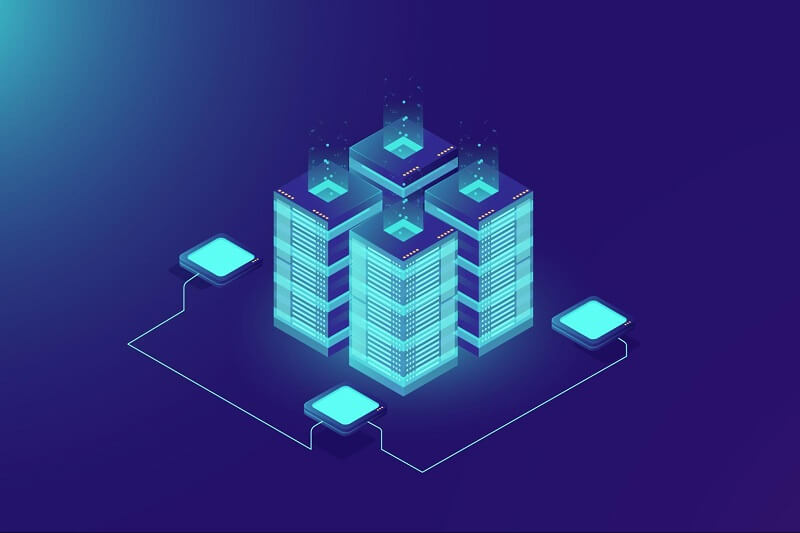
Web3 Crypto Wallet Development: Building Secure and Decentralized Wallets
in Technology on February 14, 2023Web3 wallets are digital wallets that are designed to store and manage decentralized digital assets, such as cryptocurrencies, tokens, and non-fungible tokens (NFTs). Unlike traditional wallets that rely on centralized servers and third-party intermediaries, Web3 wallets use decentralized blockchain technology to provide users with more control and security over their digital assets. Building a Web3 wallet requires careful planning, implementation of best practices, and robust security protocols. In this article, we will discuss the key considerations for Web3 crypto wallet development and take into account the security considerations for decentralized Web3 wallets.
Choosing The Right Blockchain Platform
The first step in building a Web3 wallet is to choose the right blockchain platform. There are several blockchain platforms available, each with its unique features, benefits, and drawbacks. Ethereum is one of the most popular blockchain platforms for Web3 wallets, as it offers a robust set of tools and standards for developing decentralized applications (dApps) and smart contracts. Other blockchain platforms, such as Binance Smart Chain, Polkadot, and Solana, offer faster transaction times, lower fees, and other advantages that may be suitable for certain Web3 wallet use cases.
Selecting The Right Technology Stack
After choosing the blockchain platform, the next step is to select the right technology stack for the Web3 wallet. The technology stack includes the programming languages, frameworks, libraries, and tools that developers use to build the Web3 wallet. Common programming languages for Web3 crypto wallet development include Solidity, JavaScript, and Rust. Frameworks and libraries, such as Truffle and OpenZeppelin, provide developers with pre-built smart contract templates and security features that can save time and improve the overall security of the wallet.
Architecture and Design
The architecture and design of the Web3 wallet play a critical role in the user experience and security of the wallet. Developers must consider factors such as user authentication, transaction handling, and key management when designing the architecture and user interface (UI) of the wallet. The UI of the wallet should be intuitive and user-friendly, with clear instructions and visual cues to guide users through the process of managing their digital assets.
Security Considerations
While Web3 wallets offer users more control and security over their digital assets, they also present unique security challenges that developers must address. Below are some of the key security considerations for Web3 crypto wallet development.
Smart Contract Security:
Web3 wallets typically rely on smart contracts to manage transactions and digital assets. Smart contracts can be vulnerable to bugs, exploits, and also attacks, which can result in the loss of digital assets. Developers must implement proper security protocols and conduct thorough audits to ensure that the smart contracts are secure and free of vulnerabilities.
Phishing and Scams:
Phishing and scams are common in the cryptocurrency space, and Web3 wallets are not immune. Attackers can use phishing emails, fake websites, and other social engineering tactics to trick users into disclosing their private keys or sending funds to fraudulent addresses. Developers must implement proper anti-phishing measures, such as SSL certificates, two-factor authentication, and address verification, to protect users from these attacks.
Hardware and Software Security:
Web3 wallets rely on both hardware and software components, such as computers, smartphones, and hardware wallets. These components can be vulnerable to malware, viruses, and also other types of attacks, which can compromise the security of the Web3 wallet. Developers must implement proper security measures, such as antivirus software, firewalls, and secure hardware wallets, to protect users from these types of attacks.
Key Management:
The security of a Web3 wallet depends on the security of the user’s private keys. If a user’s private keys are compromised, their digital assets can be stolen or lost. Developers must implement proper key management protocols, such as multi-signature (multi-sig) and cold storage, to ensure that private keys are stored securely and protected from unauthorized access.
Testing and Auditing
Thorough testing and auditing are critical for Web3 crypto wallet development to ensure that the wallet is secure, reliable, and performs as intended. Developers must conduct various tests, such as unit tests, integration tests, and user acceptance tests, to identify and fix any bugs or issues in the wallet. Additionally, developers must conduct thorough security audits to identify any vulnerabilities or potential attack vectors that could compromise the wallet’s security.
Conclusion
Web3 crypto wallet development is a complex process that requires careful planning, implementation of best practices, and robust security protocols. Developers must consider various factors, such as blockchain platform selection, technology stack selection, architecture and design, and security considerations, to build secure and decentralized Web3 wallets. Thorough testing and auditing are also critical to ensure that the wallet is secure, reliable, and performs as intended. With the proper planning, implementation, and testing, Web3 wallets can provide users with a more secure and decentralized way to manage their digital assets.
In conclusion, the development of Web3 wallets is rapidly growing, with more and more users adopting cryptocurrencies and other digital assets. With this growth comes a higher demand for secure and reliable Web3 wallets that can provide users with the level of control and security they need over their digital assets. Developers must be mindful of the various security considerations for Web3 wallet development. They must take the necessary steps to ensure that the wallet is secure, reliable, and performs as intended. By following best practices, conducting thorough testing and auditing, and implementing robust security protocols, developers can build Web3 wallets that meet the needs and expectations of users in the decentralized Web3 ecosystem.

